How To Use Castor Oil To Remove Moles
On its own or in combination with other ingredients, this golden liquid has a lot to offer.

Image: Midjourney/ StyleCraze Design Team
Castor oil, derived from castor bean seeds, is well known for its various therapeutic properties, including antifungal, antibacterial, and antiviral properties. It is commonly used in dermatology and in many home remedies for skin issues, as it can penetrate the skin, reaching its lower layers. Due to this quality, you can also use castor oil to remove moles. Castor oil can also help to hydrate the skin, reduce acne, remove scars and reduce the appearance of stretch marks (1), (2), (3).
Moles, a common type of skin growth, generally develop in childhood or adolescence. Even though moles are harmless, many people prefer to get rid of them for cosmetic reasons. Anecdotal evidence suggests that castor oil can work well on moles. To know about the details of some of the remedies that use castor oil to remove moles, read on!

Given below are different remedies that include castor oil. Use these remedies to get rid of a mole in that really awkward place.
In This Article
How To Use Castor Oil To Remove Moles
Moles are common skin lesions. They are undesirable growths on the skin and are brown or black in color. The shape of the mole can be either oval or round. Moles occur when the cells grow together in a bunch rather than growing separately. They can be removed through surgical methods or simple home remedies. Read on to know how to use the remedies.
Effective Combinations for Mole Removal: Castor Oil And Other Ingredients
1. Castor Oil And Baking Soda
2. Castor Oil And Garlic
3. Honey And Castor Oil
4. Tea Tree Oil And Castor Oil
DISCLAIMER: Before you use any of these remedies, consult a doctor to find out if the mole is cancerous or not.
1. Castor Oil And Baking Soda For Removing Moles
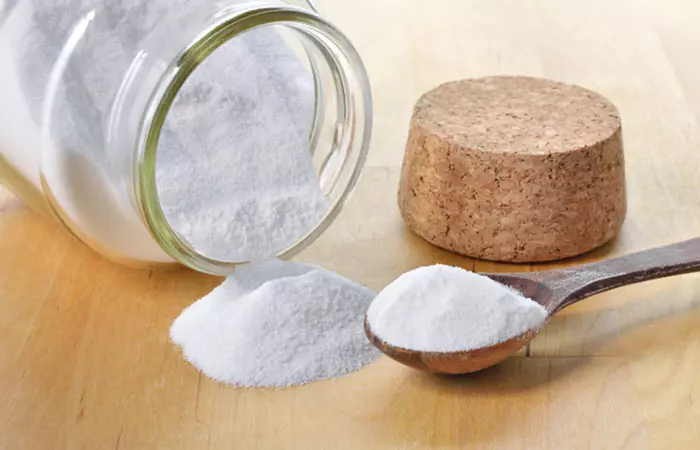
Ingredients
- 2-3 drops castor oil
- 1/2 teaspoon baking soda
- An adhesive bandage
Process
1. Add the oil to the baking soda powder. Mix well to form a sticky paste.
2. Spread this paste evenly on the mole and cover with a bandage to keep the paste in place.
3. Remove the bandage the next morning and wash the area.
4. Repeat this every alternate evening until the mole is gone.
How Long Does It Take
Depending on the size, it might take a few weeks for the mole to shed.
Precautions
Do not scrub with this mixture as it may leave a scar once the mole falls off.
2. Castor Oil And Garlic For Moles

Ingredients
- 2-3 drops castor oil
- 1/2 teaspoon garlic powder or fresh garlic paste
Process
1. Mix the ingredients to get a thick paste.
2. Apply the paste on the mole and leave it on for a few hours.
3. Rinse with water and pat the area dry.
4. Repeat this remedy twice a day for quick results.
How Long Does It Take
This remedy will start showing results in a week.
Precautions
If you are allergic to garlic, please do not use this remedy.
 Quick Tip
Quick Tip3. Honey And Castor Oil For Moles

Ingredients
- 1 teaspoon honey
- 2-3 drops castor oil
- 1/2 teaspoon flaxseed powder (optional)
- A band-aid
Process
1. Clean the area with soap and water. Pat it dry.
2. Mix the honey and castor oil and apply the mixture on the mole. You can add flaxseed powder as well for faster results.
3. Cover with the band-aid for a few hours.
4. Remove the band-aid and clean the area before reapplying the honey and castor oil mix.
5. Do this twice a day for a couple of days.
How Long Does It Take
You will see results in 7-10 days.
Precautions
Clean the area before you apply the mixture to prevent infection.
 Quick Tip
Quick Tip4. Tea Tree Oil And Castor Oil Mixture To Treat Moles

Ingredients
- 3-4 drops tea tree oil
- 1 teaspoon castor oil
- Cotton ball
- Adhesive tape
Process
1. Mix the tea tree oil essential oil with the castor oil.
2. Now, soak the cotton ball in the mixture and place it on the mole.
3. Secure the cotton ball in place with the tape.
4. Leave it on for three to four hours.
5. Repeat this once or twice daily.
How Long Does It Take
It can take any time from a week to a month for the mole to fall off.
Precautions
Tea tree oil can cause rashes, hives, and skin irritation. Make sure you do a patch test on your forearm before using tea tree oil for mole removal.
In general, the time taken to remove the mole will depend on its type. Some smaller moles disappear faster, while some others take more time to get cured.
These remedies are some of the cheapest and less time-consuming ones, and if done properly, you will notice changes in a few days. The mole will start shrinking and slowly disappear, leaving a reddish mark behind, which will go away in a few days.
Side Effects
Castor oil is safe for overall skin health, but if you are allergic to castor beans and their products, avoid using it. Overuse of this oil may lead to skin irritation in some people. Always do a patch test before you use it. Additionally, consult a dermatologist before using any home remedy featuring castor oil to reduce health risks.
Castor oil has a lot of benefits for general health, skin, and hair. Apart from removing moles, skin tags, and warts, it also enhances the production of collagen. This delays the appearance of wrinkles and slows down the skin’s aging process. It also possesses anti-inflammatory properties that heal swellings and sunburns as well.
Infographic: Tips To Use Castor Oil To Get Rid Of Moles
Moles are quite common; they form when skin cells cluster together. While most moles are not harmful, their presence can make you feel uneasy. You can choose various at-home methods to get rid of them if you’re reluctant to have surgery. Check out the infographic below to learn some quick and easy ways to use castor oil to get rid of moles. Illustration: StyleCraze Design Team
Castor oil is a versatile oil that has many benefits for beauty and skin care. It is a plant-based, organic oil that has been used for centuries in holistic and alternative medicine for a variety of purposes including mole removal. It is commonly used in dermatological practices due to its antimicrobial properties. It is also used to reduce the appearance of stretch marks and scars, and hydrate the skin. Castor oil, in combination with garlic, baking soda, honey, or tea tree oil, may help shrink the mole. Ensure you perform a patch test before using castor oil to avoid an allergic reaction.
Frequently Asked Questions
Why do moles not like castor oil?
Castor oil has anti-inflammatory properties that can help reduce the moles. According to Dr. Paul Yamauchi, MD, PhD, a surgical dermatologist, the smell can irritate the moles. He says, “Moles typically dislike castor oil due to its strong odor and taste, which can be unpleasant for them. Additionally, castor oil has natural properties that may irritate moles, causing them to retreat and eventually disappear over time.”
How long does it take for castor oil to work on moles?
Dr. Yamauchi says, “The timeframe for castor oil to work on moles can vary from person to person. In most cases, consistent application of castor oil over several weeks or even months may be required to observe significant changes. Patience and regular monitoring are key when using this method.” Also, it is important to consult a doctor if the need arises.
Dr. Zein Obagi, MD, a board-certified dermatologist, says, “It is important to note that moles should be monitored for any changes in size, shape, color, or texture. If you notice any concerning developments, such as rapid growth, irregular borders, or bleeding, it is crucial to seek medical attention promptly. A dermatologist can assess the mole and determine if further investigation or intervention is necessary.”
Can castor oil and garlic cause inflammation on the skin?
No. Both castor oil and garlic exhibit anti-inflammatory properties that help reduce inflammatory skin conditions (4), (5).
Are there any other natural remedies or alternative treatments for mole removal that are equally or more effective than castor oil?
Yes, according to anecdotal evidence, to remove your mole, you may apply apple cider vinegar for almost 15 minutes, crushed garlic overnight, and tea tree oil for a couple of hours on a daily basis. You may also try different home remedies for mole removal. It can show better results than castor oil.
Are there any particular types of moles that are more or less amenable to removal with castor oil, and how can one distinguish between these types?
There are different types of moles like congenital moles (present from birth), acquired moles (developed later in life due to various factors like sun exposure), and spitz nevi (pinkish or tannish moles), but there is a lack of evidence, both scientific and anecdotal, to determine whether castor oil might be effective in removing one type of mole over another. Consult your healthcare provider to understand the origins of your mole and how to remove it effectively.
How does the cost and accessibility of castor oil compare to other mole removal methods, such as surgery or laser therapy?
The use of castor oil along with other natural ingredients to remove moles is a popular affordable home remedy. Castor oil can be bought at your local store and it is easy to apply. However, surgery and laser therapy, although costlier, can give you guaranteed removal results while castor oil may or may not work.
How can I differentiate between the results of using castor oil and other mole removal methods, and how can I determine whether castor oil has been effective in removing a particular mole?
As the success rate of the home remedy can vary depending on the type of mole, its location, and other factors, it can be challenging to compare the outcomes of using castor oil to other mole removal procedures. Any mole you are concerned about should always be evaluated by a healthcare professional to decide on the best course of action.
Is it safe to remove moles at home?
No, it is not safe to remove moles on your own, as it can lead to infections and other complications. Improper mole removal can cause permanent scarring and discoloration. It may also lead to blood clots and other issues. So, it is always recommended to consult a healthcare professional for mole removal. Seek their guidance on home remedies as well.
What are the signs that a mole should be checked by a dermatologist?
Get your mole checked by a dermatologist if it shows irregular borders and color variations. If your mole is larger than 6 millimeters and constantly changing shape, it needs to be evaluated by a skin specialist as soon as possible. Moles that bleed occasionally and itch a lot should be checked as well.
Key Takeaways
- Castor oil has a high penetrating capacity and can remove moles, a harmless skin growth.
- You can apply it directly to the mole or use a cotton swab and leave it covered with a bandage overnight. Repeat the application till the mole disappears.
- Combine baking soda, garlic, honey, or tea tree oil with castor oil to create effective natural remedies for moles.
- Be cautious and check for discoloration or irritation. Do a patch test to prevent any adverse reaction.
Learn how to use castor oil for natural mole removal in this enlightening video. Say goodbye to unwanted moles and embrace natural remedies. Watch now and achieve clear, blemish-free skin.
Read full bio of Dr. CP Thajudheen
- Dr. Paul Yamauchi, MD, PhD, is a cosmetic, medical, and surgical dermatologist with 18 years of experience in general dermatology, esthetic dermatology, dermatologic surgery, and clinical research. He is Adjunct Associate Professor at the John Wayne Cancer Institute, Santa Monica, a clinical assistant professor of medicine in the Division of Dermatology at the David Geffen School of Medicine, UCLA, and a fellow with the American Academy of Dermatology, the American Academy of Cosmetic Surgery, the American Society of Dermatology Surgery, the American Society of Laser Medicine and Surgery, and the Pacific Dermatology Association.
 Dr. Paul Yamauchi, MD, PhD, is a cosmetic, medical, and surgical dermatologist with 18 years of experience in general dermatology, esthetic dermatology, dermatologic surgery, and clinical research. He is Adjunct Associate Professor at the John Wayne Cancer Institute, Santa Monica, a clinical assistant professor of medicine in the Division of Dermatology at the David Geffen School of Medicine, UCLA, and a fellow with the American Academy of Dermatology, the American Academy of Cosmetic Surgery, the American Society of Dermatology Surgery, the American Society of Laser Medicine and Surgery, and the Pacific Dermatology Association.
Dr. Paul Yamauchi, MD, PhD, is a cosmetic, medical, and surgical dermatologist with 18 years of experience in general dermatology, esthetic dermatology, dermatologic surgery, and clinical research. He is Adjunct Associate Professor at the John Wayne Cancer Institute, Santa Monica, a clinical assistant professor of medicine in the Division of Dermatology at the David Geffen School of Medicine, UCLA, and a fellow with the American Academy of Dermatology, the American Academy of Cosmetic Surgery, the American Society of Dermatology Surgery, the American Society of Laser Medicine and Surgery, and the Pacific Dermatology Association. - Dr. Zein Obagi, MD, is a board-certified dermatologist with more than three decades of experience. He has pioneered advanced skin care solutions and is ranked among the world’s top experts on chemical peels and treatment of conditions specific to skin of color. Dr. Obagi earned his MD degree from The United States Naval Postgraduate School.
 Dr. Zein Obagi, MD, is a board-certified dermatologist with more than three decades of experience. He has pioneered advanced skin care solutions and is ranked among the world’s top experts on chemical peels and treatment of conditions specific to skin of color. Dr. Obagi earned his MD degree from The United States Naval Postgraduate School.
Dr. Zein Obagi, MD, is a board-certified dermatologist with more than three decades of experience. He has pioneered advanced skin care solutions and is ranked among the world’s top experts on chemical peels and treatment of conditions specific to skin of color. Dr. Obagi earned his MD degree from The United States Naval Postgraduate School.
Read full bio of Ramona Sinha
Read full bio of Monomita Chakraborty






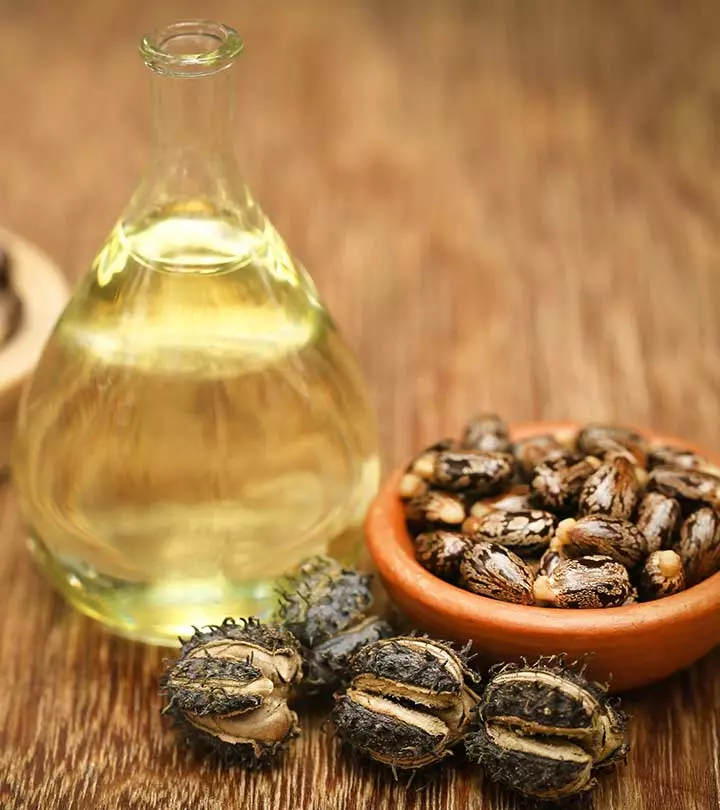













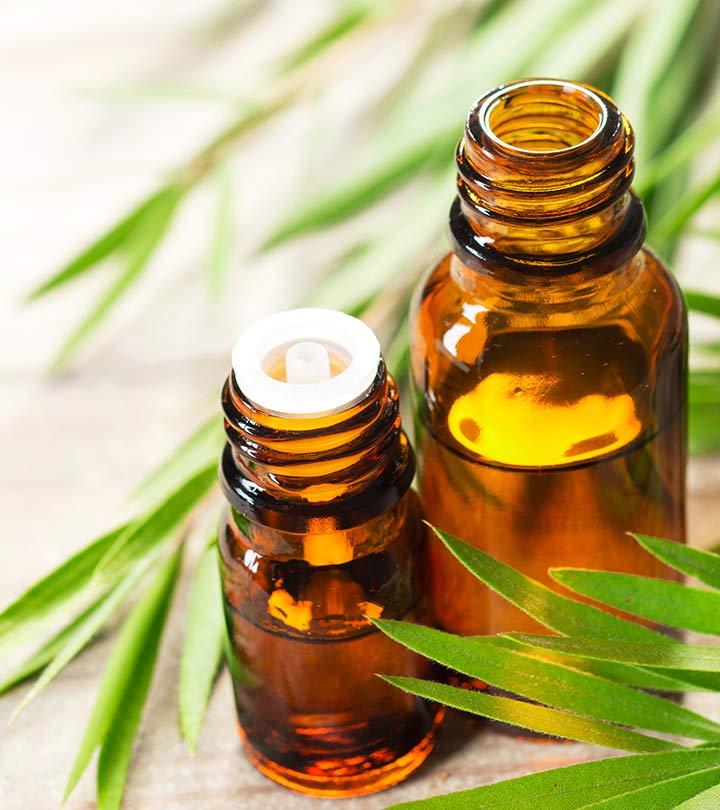

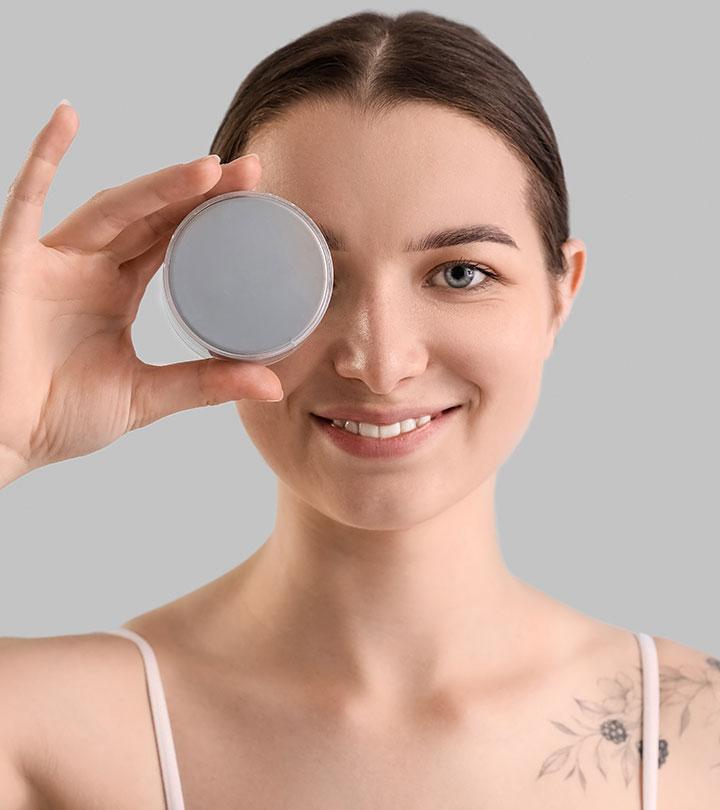


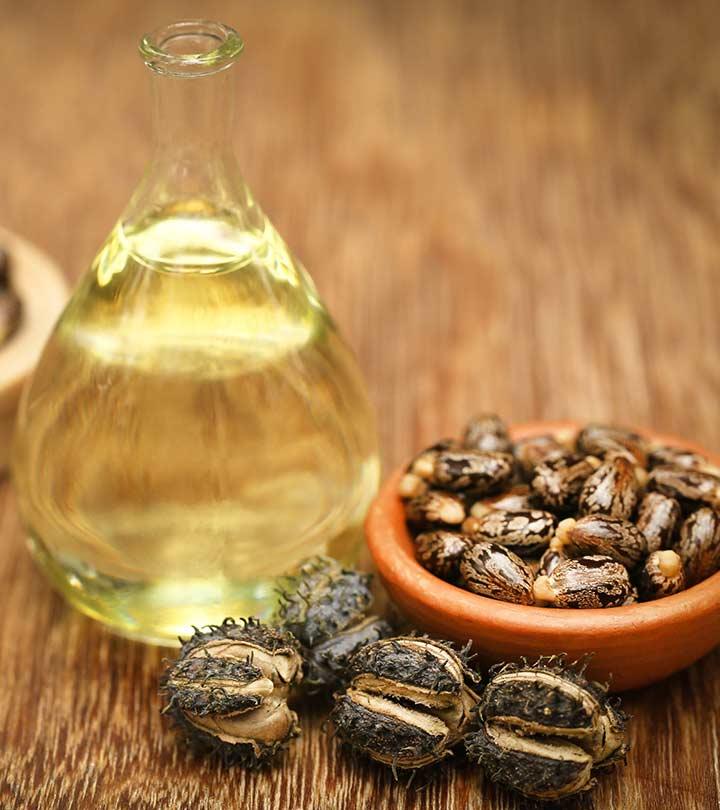
Community Experiences
Join the conversation and become a part of our empowering community! Share your stories, experiences, and insights to connect with other beauty, lifestyle, and health enthusiasts.